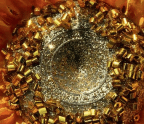Sofia Coppola on Pictures

“I never thought I would be a filmmaker. It wasn’t something I ever planned,” Sofia Coppola recently told the Guardian. “I felt frustrated at art school. I had so many interests—design, photography, music.” By turning to film she no longer had to choose. The form allowed Coppola to engage all her passions, especially photography, which has been central to shaping her cinematic language. From Coppola’s debut with The Virgin Suicides (1999) to Lost in Translation (2003) to Marie Antoinette (2006), the filmmaker has turned to the history of photography for inspiration for the interiors, costumes, and atmosphere of her films. Storyboards, replete with photographic references, were key to Coppola’s most recent—and controversial—film, the Civil War–era The Beguiled (2017), for which she won the Best Director Award at last year’s Cannes Film Festival. Each of her six feature-length films is visually distinctive, and yet it’s possible to identify in all of them a directorial signature, one that might be characterized by visual calm and compositional clarity.
One sunny morning in early January, writer Philip Gefter sat down with Coppola at her home in Lower Manhattan to discuss the influence of photography on her filmmaking. On the walls hung a number of (1997); a Lee Friedlander nude; an Andy Warhol polaroid of Tina Chow. These pictures provided clues not only about Coppola’s knowledge of photography, but also about the subtlety of her sensibility—and became a starting point for their conversation about the look and feel of film.
You’re reading a preview, subscribe to read more.
Start your free 30 days





